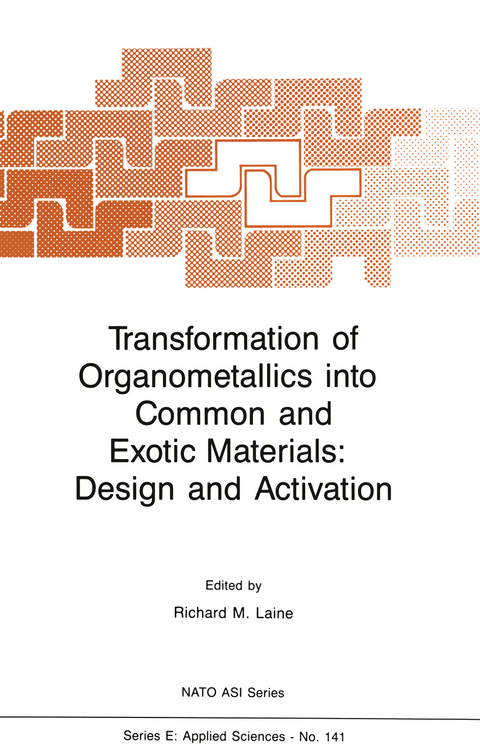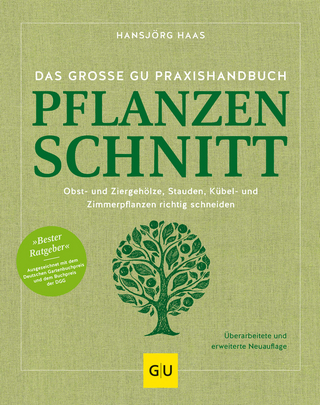
Transformation of Organometallics into Common and Exotic Materials: Design and Activation
Springer (Verlag)
978-94-010-7122-2 (ISBN)
The design, -synthesis, and selective pyrolytic conversion of organo metallic precursdrs to materials of high purity or specific morphology (for electronic or optical applications), high strength and/or high-temperature stability (for structural or refractory applications) represents a poten tial area of extreme growth at the overlap of chemistry and materials science (materials chemistry). Research in this area is likely to have considerable impact at both the academic and societal levels because it will require development of scientific expertise in areas currently not well understood. Examples include: (1) The thermodynamics of molecular rearrangements in organometallic molecules at temperatures above 200°C; (2) The electronic properties of amorphous ceramic materials; (3) The phys icochemical properties of ceramic molecular composites; and (4) The optical properties of multicomponent glasses made by sol-gel processing. The opportunity to establish the scientific principles needed to pursue useful research goals in "materials chemistry" requires communica tion between chemists, ceramists, metallurgists, and physicists. To date, there have been few opportunities to create an environment where such communication might occur. The objective of this NATO Advanced Research Workshop was to promote discussions between experts in the varibus disci plines aligned with "materials chemistry. " These discussions were intended to identify the scope and potential rewards of research efforts in the development of: Custom-designed precursors to common and exotic materials, methods of selectively transforming these precursors in high yield to the desired material, and methods of characterizing the final products.
Section A Framework Science.- Towards a Common Theoretical Language for Molecular and Solid-State Chemistry.- Kinetics and Thermodynamics of Gas Phase Pyrolysis of Organometallics.- The Pyrolytic Transformation of Organometallic Compounds into Refractory Metals: Tungsten and Molybdenum Carbides.- Refractory Hardmetals: Industrial Relevance.- Use of Ammonolytic Intermediates for the Synthesis of Nitrides and Carbonitrides.- Cluster Derived Metal Particles in Catalysis. Hydrogenation, Isomerization and Dehydration Reactions on (?5-C5H5)NiM3(?-H)3(CO)9 (M = Ru, Os). Effect of the Metal Stoichiometry in Homogeneous and Heterogeneous Reactions and Synergistic Behaviour of the Support.- Organometallic Polymers from Metal 2,3-Dihydro-1,3-Diborol Complexes.- Section B Preceramic Polymers.- Ceramics via Polymer Pyrolysis: (1) General Principles (2) the Crystal and Molecular Structure of ?-Imido-bis-[bis(trimethylsilylamino)(trimethylsilylamino)]Borane.- Organosilicon Precursors to Silicon Carbide for Electronic and Ceramic Applications.- Catalyzed Dehydrogenative Coupling as a Route to Novel Organometallic Polymers.- New Polycarbosilane Models: Preparation and Characterization of a Poly(methylchloro)silmethylene.- Organosilicon Polymers as Precursors for Silicon-Containing Ceramics.- Section C Chemical Vapor Deposition.- Chemical Vapor Deposition of Fe-Co Thin Films from Fe-Co Organometallic Clusters.- How to make Metal Silicide Thin Films from Molecular Silicon-Metal Compounds—and How Not To.- Chemical Vapor Deposition of Boron Nitride Using Organo-Metallic Adducts.- Organometallic Compounds for III–V Devices.- III–V MOCVD Growth Using Adducts as Single Starting Materials.- Organometallic Growth of RUS2.- Section D Sol-Gel Processing.- Better Ceramics ThroughChemistry.- Technical Conversion of Alkoxides to Oxides, Yesterday, Today, and Tomorrow—illustrated by examples taken from the sol-gel dip coatings on glass.- Sol-Gel Processing of Transition Metal Oxides.- The Sol-Gel Process: Present and Future.- Sol-Gel Derived Thin Films: Critical Issues.- Organometallic Compounds as Starting Materials for the Preparation of Uniform Finely Dispersed Powders.
| Reihe/Serie | NATO Science Series E ; 141 |
|---|---|
| Zusatzinfo | 312 p. |
| Verlagsort | Dordrecht |
| Sprache | englisch |
| Maße | 155 x 235 mm |
| Themenwelt | Sachbuch/Ratgeber ► Natur / Technik ► Garten |
| Naturwissenschaften ► Chemie ► Anorganische Chemie | |
| Naturwissenschaften ► Chemie ► Organische Chemie | |
| ISBN-10 | 94-010-7122-5 / 9401071225 |
| ISBN-13 | 978-94-010-7122-2 / 9789401071222 |
| Zustand | Neuware |
| Haben Sie eine Frage zum Produkt? |
aus dem Bereich


